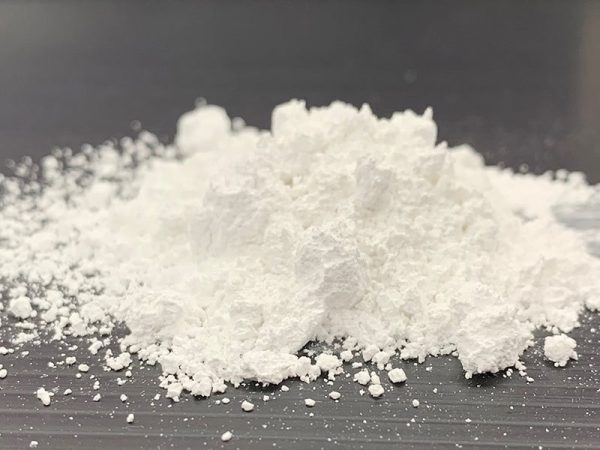
Barite is a sulfate mineral of barium. Its main component is barium sulfate (BaSO4). It has the characteristics of high density, stable chemical properties, non-magnetism and toxicity. It is used as a weighting agent for oil drilling mud, barium chemical industry and nuclear radiation protection raw materials. It is widely used around the world.
1. Drilling mud weighting agent
The main use of barite accounts for 85% to 90% of its total consumption. It can cool the drill bit, strengthen the well wall, and control the pressure of crude oil and natural gas, thereby stabilizing oil and gas production and preventing blowout accidents. Generally, the fineness is required to be more than 325 mesh, the density is greater than 4.2g/cm3, the BaSO4 content is not less than 95%, and the soluble salts are less than 1%.
2. Various barium compounds
At present, the second largest use of barite is for the production of barium chemical products. Barium as raw material can be used to produce barium oxide, barium carbonate, barium chloride, barium nitrate, precipitated barium sulfate, barium hydroxide and other chemical raw materials. Chemically pure barium sulfate is the standard for measuring whiteness; barium carbonate is an important raw material for optical glass. It introduces BaO into the glass, thereby increasing the refractive index of the glass and improving other optical properties; barium chloride is an agricultural pesticide. Insecticide; barium nitrate is used in fireworks and glass industry; barium permanganate is a green pigment.
3. Zinc-barium white pigment
Zinc-barium white, also known as lithopone, is a commonly used high-quality white pigment that can be used as a raw material for paints and painting pigments.
4. Inorganic fillers
In the paint industry, barite powder filler can increase the thickness, strength and durability of the paint film. It has more advantages than lead white and magnesium white for indoor use. The barite powder used requires a fineness of >2000 mesh and a whiteness of greater than 95. The paper industry, rubber and plastics industries also use barite as filler, which can improve the hardness, wear resistance and aging resistance of rubber and plastics.
5. Cement mineralizer
In cement production, adding barite has a significant effect on promoting the formation and activation of C3S. The quality of clinker has been improved. The early strength of cement can be increased by about 20% to 25%, and the later strength can be increased by about 10%. The clinker is burned The temperature dropped from 1450℃ to 1300℃±50℃. Adding an appropriate amount of barite to the cement raw material using coal gangue as raw material can greatly improve the strength of cement with low clinker saturation ratio, especially the early strength. This is a comprehensive utilization of coal gangue and a low-cost production method. Calcium, energy-saving, early-strength and high-strength cements offer a beneficial approach.
6. Ray-proof cement, mortar and concrete
Using barite’s ability to absorb X-rays, barite is used to make barium cement, barite mortar and barite concrete, which can be used to replace metal lead plates to shield nuclear reactors and build X-ray-proof buildings for scientific research and hospitals.
7. Barium ferrite magnetic material
M-type barium ferrite is widely used in perpendicular magnetic recording, magnetic and magneto-optical devices, microwave devices and electromagnetic shielding materials due to its high saturation magnetization, magnetic anisotropic field and excellent chemical stability. One of the microwave absorbers.
8. Conductive materials
Barite powder is a natural white extender pigment with good modification of metal oxides and their salts. It is used as core material and coated with a layer of doped SnO2 on its surface to make a light-colored conductive powder. , not only can reduce the preparation cost of conductive powder, but also in the rapidly developing electronics industry and related high-tech industries, this light-colored composite metal oxide conductive material with stable chemical properties and stable electrical properties, as a new fine chemical product, has Broad development prospects.
9. Radiation protection fiber
Jinte et al. used the X-ray absorption characteristics of barium sulfate (barite), barium titanate and bismuth oxide to develop composite fibers that can absorb X-rays. Yarns and fabrics processed with this fiber can effectively shield X-rays. Rays.
10. Highly reflective paint
Researchers have filed a patent application for a white paint formulation based on barium sulfate (barite) that has a reflectivity of up to 98.1% compared to all other white paints. This formula uses a higher concentration of barite with a wider particle size range, which has an ambient cooling effect when used on exterior surfaces.
11. Other products
Barite powder can be used to refine kerosene; it can also be used medically as a gastrointestinal contrast agent, referred to as “barium meal”; barite is mixed with oil and applied to a cloth base to make waterproof tarpaulin; rubber and oil contain about 10% weight Spar’s asphalt mixture has been successfully used in parking lots and is a durable paving material.
